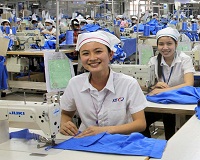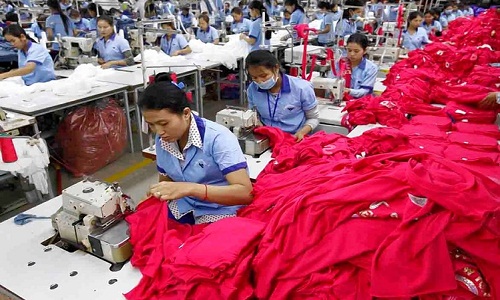"To keep the growth wheels moving, countries need to rethink their strategies. And Cambodia is no different. After graduating from the Least Developed Country status in July 2016, Cambodia’s economy has remained healthy with a GDP growth of 6.9 per cent in 2017. Growth was driven by the recovering tourism sector, the ongoing construction boom and the gradual emergence of non-textile exports. Stats point reveal during the first 10 months of 2017, Cambodia received 4.3 million international tourists, which is up 10.4 per cent compared with the same period in 2016."

To keep the growth wheels moving, countries need to rethink their strategies. And Cambodia is no different. After graduating from the Least Developed Country status in July 2016, Cambodia’s economy has remained healthy with a GDP growth of 6.9 per cent in 2017. Growth was driven by the recovering tourism sector, the ongoing construction boom and the gradual emergence of non-textile exports. Stats point reveal during the first 10 months of 2017, Cambodia received 4.3 million international tourists, which is up 10.4 per cent compared with the same period in 2016. This was partly due to newly-established direct regional flights as well as government initiatives to boost arrivals.

The construction sector has kept the momentum going with investment during the first 10 months of the year reaching $6.26 billion, a 27 per cent increase over the same period in 2016. This was followed by exports of machinery and auto parts. The number of factories dedicated to electrical machinery and auto parts increased from 46 in 2012 (5.1 per cent of manufacturing) to 121 in 2017 (7.1 per cent of manufacturing).
Decelerating growth in textile
On the contrary, growth in clothing and other textile exports decelerated to 5.4 per cent in the first half of 2017, compared with the 8.4 per cent growth rate in 2016. Textile exports have also eased in volume terms to a growth rate of 3.6 per cent in 2017, which is down from 2016’s figure of 12.3 per cent. The slowdown is result of a decrease in productivity, an increasingly competitive global market, the high cost of transportation and energy as well as rising labour costs. The minimum wage for the garment and footwear sector is $153 a month and will increase to $170 a month in 2018. This will make the minimum wage in Cambodia higher than that of other countries with large garment industries such as Bangladesh and Myanmar.
Competitiveness ranking
The 2017 Global Competitiveness Report ranks Cambodia as one of the least competitive countries in Asean. Hampered by a poorly educated workforce, inefficient institutions, lack of infrastructure and low levels of business sophistication and innovation, Cambodia ranked 94 out of 137 economies – falling from 89 in the previous year’s report. The degrowth happened due to its reliance on sectors such as garments, rice, tourism and construction. The country has a narrow export base with garments accounting for almost 70 per cent of total exports having US and European markets as its major importers. Besides two cities: Siem Reap and the capital Phnom Penh, the country doesn’t have many tourist attractions as well.
In order to enhance competitiveness, Cambodia needs to diversify and upgrade its economy. In addition to garments, Cambodia also produces other goods with great export potential such as pulp paper, machinery, bicycles, plywood, maize, vegetables, sands, sugar and palm oil. These emerging products are currently exported in small quantities but will soon become more competitive and provide opportunities for future growth and diversification. Similarly, Cambodia can channel investment into developing additional potential tourism destinations such as the coastal areas of the southwest and the mountainous northeast provinces. It also possesses scope for eco-tourism, which can turn to be a big plus.
Building on strengths
Cambodia needs to move to higher value-added production and climb the global value chain by way of improvements in infrastructure, human capital and governance. There needs to be a lot of thrust on improving the quality of road, air and sea transport infrastructure and to cut the cost of electricity, which is among the highest in Asean. In order to build on its people power, the country needs to emphasise on sound education system. It also needs to enhance the quality of learning and increase the educational attainment of its workforce. Education reforms should focus on improving accreditation and quality assurance mechanisms, introducing incentives to prioritise science- and mathematics-based subjects and research, providing market-relevant technical and vocational training and encouraging the teaching of workplace soft skills such as communication, problem solving and teamwork. Not only this, the regulatory framework for doing business in Cambodia also needs to be strengthened.
With regards to all these, the government has taken initiatives to make business easier by simplifying company name checks, streamlining tax registration and eliminating the requirement to publish the new company’s incorporation in the official gazette. It also needs to take steps in order to reduce corruption, strengthen policy stability and cut logistical costs, stated Pheakdey Heng, founder and chairman, Enrich Institute.












